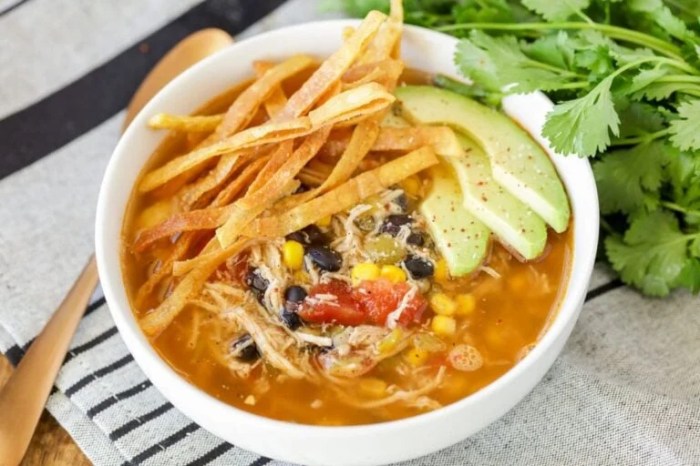Easy recipes for kids are a fantastic way to introduce young cooks to the joy of creating delicious meals. From simple snacks to complete family dinners, these recipes make cooking a fun and engaging experience. This guide explores everything from selecting kid-friendly ingredients and safe cooking practices to the importance of making the process enjoyable and learning essential skills.
Get ready to turn mealtimes into magical moments!
This comprehensive resource covers a wide range of topics, from basic ingredient handling to advanced cooking techniques. We’ll explore age-appropriate recipes, different cooking methods, and the nutritional benefits of these kid-friendly meals. Whether you’re a seasoned chef or a beginner, these easy recipes will help you create unforgettable culinary adventures with your little ones.
Introduction to Easy Recipes for Kids
Easy recipes for kids are designed to be both delicious and educational. They focus on using simple ingredients and straightforward techniques to introduce children to the world of cooking. This approach makes the experience fun and engaging, fostering a love for food and culinary exploration. These recipes are adaptable to different age groups and skill levels, encouraging participation and growth.These recipes emphasize the enjoyment of the process, making cooking a positive and memorable experience.
By keeping the recipes simple, children can focus on the creative aspect and the satisfaction of creating something edible with their own hands. Furthermore, they help develop essential life skills, such as following instructions, measuring ingredients, and understanding food safety.
Popular Kid-Friendly Ingredients and Dishes
Children often have strong preferences for certain flavors and textures. Popular kid-friendly ingredients include fruits (bananas, strawberries, apples), vegetables (carrots, peas, corn), pasta, cheese, and various types of meat. Dishes that incorporate these ingredients, such as pasta with tomato sauce, fruit salads, or simple sandwiches, are typically well-received. These ingredients allow for variations in flavors and textures, appealing to a wider range of palates.
Furthermore, these foods are often readily available and inexpensive.
Importance of Making Cooking Enjoyable for Children
Making cooking enjoyable is crucial for developing a positive association with food and the kitchen. When children experience cooking as a fun and rewarding activity, they are more likely to develop healthy eating habits and a willingness to try new foods. The joy of creation, the sense of accomplishment, and the shared experience with family members all contribute to a positive attitude towards food.
Benefits of Involving Children in the Cooking Process
Involving children in the cooking process provides numerous benefits. Children learn essential life skills, such as following instructions, measuring ingredients, and understanding food safety. They also develop a sense of responsibility and pride in their accomplishments. The process promotes teamwork and communication within the family, creating a stronger bond. Additionally, children gain a deeper understanding of where their food comes from and how it is prepared.
Easy recipes for kids are a fantastic way to get them involved in the kitchen! Finding the right tools and techniques for meal prep can be tricky, though. Luckily, efficient productivity apps like the ones featured in this list of the 20 best productivity app macs can help streamline your meal planning and preparation. This can save you time and energy, freeing up more time to enjoy those delicious creations with your little ones!
Essential Cooking Skills Children Can Learn
Easy recipes provide opportunities for children to develop crucial cooking skills. They learn to measure ingredients accurately, follow instructions step-by-step, and understand basic kitchen safety. Children also gain an understanding of food preparation techniques, such as chopping, mixing, and stirring. These fundamental skills are essential for developing confidence in the kitchen and preparing for future culinary endeavors.
Age-Appropriate Recipes and Cooking Difficulty Levels
The following table Artikels age-appropriate recipes and corresponding cooking difficulty levels. Adjusting the complexity of the recipe based on the child’s age and skill level ensures a positive and successful experience.
| Age Group | Recipe Examples | Cooking Difficulty Level |
|---|---|---|
| Preschool (3-5 years) | Fruit skewers, simple sandwiches, pasta with butter and cheese | Very Easy |
| Elementary (6-8 years) | Pizza, muffins, simple stir-fries, fruit salads | Easy |
| Middle School (9-11 years) | Soups, cookies, one-pan roasted vegetables, simple quiches | Medium |
Recipe Selection and Planning
Choosing kid-friendly recipes is more than just picking something that looks appealing. It involves careful consideration of several factors, including the ingredients available and the cooking methods most suitable for young chefs. This section will guide you in selecting recipes that are both enjoyable and educational for your little ones.Planning ahead ensures a smooth cooking experience, reducing stress and maximizing the fun.
Understanding the needs and preferences of your children, while also taking into account practical aspects like ingredient availability and cost, will lead to a successful and rewarding mealtime experience.
Factors to Consider When Selecting Recipes
Selecting recipes involves several key considerations. Age appropriateness is paramount, ensuring the complexity aligns with the child’s developmental stage. Consider the child’s dietary preferences and any allergies or restrictions. Recipes should also be engaging, encouraging participation and fostering a love for cooking.
Ingredient Availability and Affordability
Ingredient availability is crucial. A recipe relying on exotic or hard-to-find ingredients will lead to frustration. Prioritize recipes using common, readily available ingredients. Equally important is affordability. Consider the cost of ingredients when selecting a recipe.
Planning around seasonal produce and using budget-friendly alternatives can significantly reduce costs without compromising nutritional value. For instance, using frozen vegetables instead of fresh ones can often save money.
Comparison of Cooking Methods for Kids
Different cooking methods cater to different skill levels and preferences. Baking, a relatively simple process, allows children to learn about measuring ingredients and understanding temperature control. Stir-frying provides a more interactive experience, allowing them to handle ingredients directly and learn about knife skills. Boiling is straightforward for basic dishes, focusing on the concept of cooking ingredients to desired tenderness.
The choice depends on the complexity of the recipe and the child’s experience level.
Recipes Categorized by Dietary Needs
This section presents a structured approach to recipe selection based on specific dietary needs. Understanding and catering to various dietary requirements is essential for inclusive meal planning.
- Vegetarian: Vegetarian recipes are easily adaptable for kids. Examples include pasta with vegetables, lentil soup, and vegetable stir-fries. These recipes often incorporate colorful vegetables, promoting healthy eating habits.
- Gluten-Free: Gluten-free recipes are available for children with gluten sensitivities. These recipes often use rice flour, almond flour, or other gluten-free alternatives in place of wheat flour. Examples include gluten-free pizza crusts, muffins, and pancakes.
- Other Dietary Needs: Adapt recipes to meet other dietary needs, such as dairy-free or nut-free. Checking ingredient lists and understanding substitutions is vital.
Sample Weekly Meal Plan
This meal plan offers a framework for a week of kid-friendly meals.
- Monday: Pasta with tomato sauce and meatballs. (Easy and adaptable)
- Tuesday: Chicken nuggets and roasted vegetables. (Popular and nutritious)
- Wednesday: Quesadillas with cheese and beans. (Quick and interactive)
- Thursday: Lentil soup with whole-wheat bread. (Vegetarian and hearty)
- Friday: Fish and chips. (Familiar and fun)
- Saturday: Pizza night. (Interactive and customizable)
- Sunday: Family brunch with pancakes and fruit. (Relaxed and enjoyable)
Table Comparing Recipe Sources
A table comparing different sources for kid-friendly recipes can aid in selection.
| Source | Pros | Cons |
|---|---|---|
| Cookbooks | Often feature detailed instructions and visual aids. | Can be expensive and may not always offer variety. |
| Online Recipe Websites | Extensive selection and often free. | Quality can vary, and recipe accuracy might not always be guaranteed. |
| Family and Friends | Personalized and familiar recipes. | May not be adaptable to dietary needs. |
Ingredient Preparation and Safety
Cooking with kids is a fantastic opportunity for learning and bonding. However, safety is paramount. Proper ingredient handling is crucial for both preventing accidents and ensuring the best results in the kitchen. This section will detail safe practices for washing, chopping, and measuring ingredients, as well as the importance of supervision and using kitchen tools correctly.
Easy recipes for kids are a great way to get them involved in the kitchen and spark their creativity. Plus, teaching them these fundamental skills early on can help them develop important life skills. And, if you want to up your kitchen game, consider these 11 items successful people have home: 11 items successful people have home.
Knowing what tools they have on hand can inspire you to make similar, more sophisticated dishes for your kids. Ultimately, these recipes are designed to be simple, fun, and delicious, making mealtimes a positive experience for everyone.
Safe Handling of Ingredients
Ensuring food safety is essential for everyone, especially when children are involved in the cooking process. Thorough washing of produce, careful handling of raw meats, and proper storage are key to preventing foodborne illnesses.
- Washing Produce: Fresh fruits and vegetables should be thoroughly washed under running water before use. This removes dirt, pesticides, and other contaminants. Children should be supervised to ensure proper technique. A simple sponge or brush can be used to scrub tougher produce. For example, potatoes and carrots can be scrubbed vigorously to remove dirt and residue.
- Handling Raw Meats: Raw meat, poultry, and seafood can carry harmful bacteria. To prevent cross-contamination, always use separate cutting boards and utensils for raw and cooked foods. Wash hands thoroughly after touching raw meat. A specific color-coded cutting board for raw meat is a great visual aid.
- Storage: Proper storage of ingredients is essential for maintaining their freshness and safety. Store perishable items in the refrigerator at appropriate temperatures. Store dry goods in airtight containers to prevent insect infestations and maintain their quality.
Chopping and Measuring Ingredients
Safe and efficient chopping techniques are crucial for both adults and children. Proper measurement is also essential for accurate recipes.
- Chopping Techniques: Always supervise children when using knives. Demonstrate the proper grip and cutting techniques. Using a child-sized cutting board and a chef’s knife with a rounded tip are recommended. Start with soft vegetables like carrots and cucumbers before progressing to harder ones. Cut ingredients into small, manageable pieces to avoid injury and make them easier to eat.
- Measuring Ingredients: Accurate measurements are essential for consistent results in cooking. Use measuring cups and spoons for dry ingredients and measuring jugs for liquids. Ensure that ingredients are leveled off to prevent inaccuracies. Children can practice pouring ingredients from a measuring cup into a bowl with adult supervision.
Using Kitchen Tools and Equipment
Proper use of kitchen tools and equipment is vital for both safety and efficiency. Learning the correct way to use tools prevents accidents and enhances cooking skills.
- Knives: Knives are sharp tools. Emphasize the importance of a secure grip, a steady cutting motion, and avoiding cutting towards oneself. Using a non-slip cutting board is essential for maintaining stability.
- Mixing Bowls: Using mixing bowls properly involves ensuring they are stable on the countertop. Encourage children to use a gentle, circular motion to mix ingredients. For example, avoid vigorous mixing, especially with ingredients that can splatter.
- Ovens: Remind children to never touch the heating elements of the oven. Use oven mitts or pot holders to safely handle hot dishes. Demonstrate how to open and close the oven door carefully to prevent burns.
Preventing Kitchen Accidents
Taking precautions can help minimize the risk of accidents in the kitchen.
- Supervision: Adult supervision is critical during cooking activities, especially when children are using sharp tools or handling hot ingredients. Always be present to guide and assist.
- Safety Gear: Encourage the use of oven mitts, pot holders, and appropriate clothing to prevent burns and cuts.
- Cleanliness: Maintaining a clean kitchen is crucial to prevent accidents. Remind children to clean up spills immediately and wipe down surfaces after use.
Importance of Supervision
Supervision is paramount when children are involved in cooking. Adult guidance ensures safety and helps children develop essential skills.
- Guidance: Provide clear instructions and guidance for each step of the recipe. This includes demonstrations on how to use different kitchen tools safely.
- Assistance: Offer support and assistance when needed, especially with tasks that might be challenging for children.
- Encouragement: Create a positive and supportive environment. Encourage children to ask questions and participate actively.
Safe Practices for Handling Different Food Types
This table Artikels safe practices for handling various types of food.
| Food Type | Washing | Preparation | Storage |
|---|---|---|---|
| Fruits and Vegetables | Thoroughly wash under running water. | Use a separate cutting board. | Store in the refrigerator. |
| Meat | Wash thoroughly after handling raw meat. | Use separate cutting board and utensils. | Store in the refrigerator. |
| Eggs | Wash thoroughly. | Handle carefully. | Store in the refrigerator. |
| Dairy | Wash hands before handling. | Handle carefully. | Store in the refrigerator. |
Cooking Procedures and Techniques

Bringing out the inner chefs in little ones is a rewarding experience! Learning basic cooking procedures and techniques equips kids with essential life skills, fostering independence and creativity in the kitchen. This section will detail the step-by-step processes for various easy recipes, highlighting suitable cooking techniques for young learners, and providing examples of simple recipes.Understanding the steps involved in a recipe, from ingredient preparation to cooking methods, is crucial for success in the kitchen.
This understanding empowers kids to take ownership of their culinary creations, building confidence and a love for food preparation. Learning different techniques will broaden their culinary horizons and allow them to explore a wider variety of dishes.
Step-by-Step Procedures for Easy Recipes
Understanding the sequential steps of a recipe is key to success. Each step plays a vital role in achieving the desired outcome. A clear procedure helps kids follow instructions precisely and understand the logic behind each action.
- Making a Simple Scrambled Egg: Crack eggs into a bowl, whisk them with a fork. Add a pinch of salt and pepper. Heat a non-stick pan over medium heat, add a little butter or oil. Pour the egg mixture into the pan and cook until set, stirring occasionally. Remove from heat and serve.
- Creating a Fruit Salad: Wash and chop your favorite fruits like strawberries, blueberries, melon, and grapes. Arrange the chopped fruits in a bowl and gently toss them together. Add a drizzle of honey or a sprinkle of cinnamon for extra flavor.
- Preparing a Peanut Butter and Jelly Sandwich: Spread peanut butter on one slice of bread, and jelly on another. Gently layer the jelly-side bread on top of the peanut butter-side bread. Cut the sandwich into desired portions.
Cooking Techniques Suitable for Kids
Various cooking techniques can be introduced to kids. Understanding these methods helps them understand how different ingredients react to heat and how to adjust cooking times based on the desired result.
- Sautéing: Involves cooking food in a small amount of oil or butter over medium heat. This technique works well for vegetables and proteins, allowing for quick cooking and preserving nutrients.
- Boiling: A simple method of cooking food in water. It’s perfect for pasta, vegetables, and eggs, helping kids learn about cooking times and the effect of heat on different ingredients.
- Baking: Cooking food in an oven. This method is suitable for cakes, cookies, and other baked goods, introducing kids to the concept of controlled heat and the transformation of ingredients over time.
Simple Recipes Using These Techniques
These examples demonstrate the application of different cooking techniques in easy recipes. Adjusting recipes to suit specific needs or dietary preferences is an important skill.
- Sautéed Vegetables: Chop vegetables like carrots, bell peppers, and onions. Sauté in a little oil over medium heat until tender-crisp. Season with salt and pepper. This is a great introduction to healthy eating and experimenting with flavors.
- Pasta with Marinara Sauce: Boil pasta according to package directions. While pasta is cooking, prepare a simple marinara sauce (canned or homemade). Toss cooked pasta with marinara sauce. This recipe introduces kids to the basics of pasta preparation and combining ingredients.
- Simple Banana Bread: Mash ripe bananas. Combine with flour, sugar, eggs, and a pinch of baking soda. Pour into a greased loaf pan and bake until golden brown. This simple baking recipe allows kids to learn about the chemical reactions involved in baking and the importance of following instructions.
Cooking Tips for Engaging Kids
Making cooking an enjoyable experience for kids is crucial. These tips help create a positive and interactive learning environment.
- Involve them in the process: Let them wash vegetables, measure ingredients, or stir the food. This gives them a sense of ownership and encourages active participation.
- Keep it fun: Use colorful ingredients, create fun shapes with cookie cutters, or play music while cooking. This makes the process more engaging and enjoyable.
- Make it a game: Set challenges like “who can chop the vegetables fastest?” or “who can measure the ingredients most accurately?”. This adds a playful element to the cooking experience.
Cooking Time and Preparation Time
A table summarizing the estimated time required for each recipe:
| Recipe | Preparation Time (minutes) | Cooking Time (minutes) |
|---|---|---|
| Simple Scrambled Eggs | 5 | 5 |
| Fruit Salad | 10 | 0 |
| Peanut Butter and Jelly Sandwich | 5 | 0 |
| Sautéed Vegetables | 10 | 10 |
| Pasta with Marinara Sauce | 10 | 15 |
| Simple Banana Bread | 15 | 30 |
Presentation and Serving

Turning a meal into a delightful experience is crucial for kids. A beautifully presented dish can make even the simplest meal seem special, encouraging a positive association with healthy eating. Visual appeal sparks interest and often leads to increased consumption, especially when children are involved in the process. It’s a great way to foster healthy eating habits and make mealtimes less of a battle and more of a fun activity.Beyond the aesthetic, a well-structured presentation often makes the meal more manageable for little ones.
Thoughtful portion sizes and a variety of textures and colors can encourage exploration and discovery, rather than apprehension or reluctance.
Visual Appeal and Creativity
A visually appealing presentation significantly impacts a child’s enjoyment of their meal. Bright colors, interesting shapes, and appealing arrangements can make food more attractive and encourage kids to try new things. Using cookie cutters to shape sandwiches, arranging vegetables into colorful patterns on a plate, or creating fun faces with fruit are just a few examples. The more creative the presentation, the more likely kids are to be intrigued by what’s on their plate.
A simple change like using a colorful plate or a fun napkin can make a huge difference.
Creative Serving Methods, Easy recipes for kids
Serving dishes in creative ways can significantly enhance the eating experience. Miniature pizzas on individual baking sheets, colorful fruit skewers, or a “build-your-own” taco bar are excellent examples of how to make mealtimes interactive and enjoyable. This approach allows children to actively participate in the meal prep and selection process, leading to increased interest and consumption.
- Miniature Pizzas: Small, individual pizzas, prepared in miniature muffin tins, are a great way to serve pizza. They’re easy for little hands to manage, and the fun presentation encourages them to eat more.
- Colorful Fruit Skewers: These are easy to make and provide a healthy and visually appealing snack or dessert. Use a variety of colorful fruits like strawberries, blueberries, grapes, and melon to create appealing combinations.
- Build-Your-Own Taco Bar: Set up a taco bar with various fillings, like seasoned ground beef, shredded chicken, beans, cheese, salsa, guacamole, and sour cream. Let children assemble their own tacos, offering a fun and interactive way to eat.
Making Mealtimes More Enjoyable
Making mealtimes fun and engaging for children is essential for developing positive associations with food. Creating a relaxed atmosphere, encouraging conversation, and involving kids in the process are all key factors. When children feel a sense of ownership over their meals, they are more likely to eat what is offered.
Involving Children in Presentation and Serving
Involving children in the presentation and serving process can significantly enhance their positive feelings towards mealtime. Allow them to help set the table, wash vegetables, or even arrange the food on the plate. This hands-on experience fosters a sense of responsibility and ownership, making mealtimes more enjoyable and educational.
Comparing Presentation Methods
| Dish | Simple Presentation | Creative Presentation |
|---|---|---|
| Sandwiches | Plain sandwich on a plate | Sandwich cut into fun shapes using cookie cutters, arranged creatively on a colorful plate. |
| Pasta | Pasta with a simple tomato sauce | Pasta with a colorful tomato sauce, arranged in a spiral or other design on the plate, served with fresh vegetables. |
| Chicken Nuggets | Chicken nuggets served on a plate | Chicken nuggets served with dipping sauces in small bowls, arranged on a platter with colorful dipping sauces. |
Nutritional Value and Health Benefits: Easy Recipes For Kids
Nourishing our little chefs with delicious and healthy meals is a key part of cooking for kids. Understanding the nutritional value of easy recipes allows us to choose meals that support their growth and development. This section delves into the essential vitamins and minerals found in various kid-friendly dishes, provides examples of recipes promoting healthy eating habits, and offers strategies for encouraging children to embrace new tastes.Easy recipes can be packed with essential nutrients, promoting healthy growth and development.
The right ingredients can contribute to a child’s overall well-being. Proper portioning and mindful food choices are vital in ensuring a balanced diet.
Essential Vitamins and Minerals
A variety of foods, when included in a child’s diet, provide the necessary vitamins and minerals for healthy growth. Different foods contribute varying amounts of nutrients, making balanced meals crucial. These nutrients are vital for building strong bones, maintaining healthy skin, and supporting cognitive development.
Easy recipes for kids are a great way to get them involved in the kitchen and spark their creativity. However, it’s also important to consider the broader picture, like how a focus on test scores might actually hinder a child’s overall development. A recent study, study finds that college readiness decreases when schools focus test scores , highlights the importance of a well-rounded education.
Ultimately, simple, fun recipes are still a fantastic way to teach kids valuable life skills, even while promoting a more well-rounded approach to learning.
Examples of Healthy Recipes
These recipes exemplify simple, kid-friendly meals that provide a range of essential nutrients. The recipes are designed to be appealing to children while also promoting healthy eating habits.
- Chicken and Vegetable Stir-fry: This dish provides protein from the chicken and a range of vitamins and minerals from the vegetables. Stir-fries are easy to prepare and offer flexibility in incorporating different vegetables. The addition of lean protein sources like chicken, along with a variety of vegetables, contributes to a balanced meal.
- Lentil Soup: Lentils are an excellent source of protein and fiber, essential for a child’s growth and development. Lentil soup is a hearty and flavorful dish that can be customized with different vegetables for added nutritional value.
- Whole-wheat Pasta with Marinara Sauce and Veggies: This meal provides complex carbohydrates from whole-wheat pasta, protein from the sauce and vegetables, and vitamins and minerals from the fresh produce. The inclusion of whole grains provides sustained energy and essential nutrients.
Encouraging Children to Try New Foods
Introducing new foods gradually and positively can encourage children to expand their palates. Presenting foods in an attractive manner and involving children in the cooking process can make them more receptive to trying new things. Children are more likely to try a food if they have helped prepare it.
Balancing Portion Sizes for Kids
Portion sizes are crucial for maintaining a healthy weight and ensuring children receive the appropriate amount of nutrients without overeating. Adjusting portion sizes based on the child’s age, activity level, and individual needs is essential. A smaller portion size is usually sufficient for children, as their stomachs are smaller than adults’.
Nutritional Content of Different Recipes
This table provides an overview of the approximate nutritional content of the previously mentioned recipes. Note that specific values can vary depending on the ingredients used.
| Recipe | Approximate Calories | Protein (grams) | Carbohydrates (grams) | Fat (grams) |
|---|---|---|---|---|
| Chicken and Vegetable Stir-fry | 350 | 25 | 40 | 15 |
| Lentil Soup | 280 | 18 | 35 | 8 |
| Whole-wheat Pasta with Marinara Sauce and Veggies | 400 | 20 | 60 | 18 |
Troubleshooting and Common Mistakes
Cooking with kids can be a delightful adventure, but sometimes things don’t go exactly as planned. Learning to identify and solve common problems is crucial for building confidence and fostering a positive cooking experience. This section focuses on troubleshooting techniques, helping you navigate unexpected situations and turn those little culinary mishaps into valuable learning opportunities.Understanding common pitfalls and having solutions readily available will transform a potential frustration into a fun learning experience for everyone involved.
A prepared approach, rather than panic, is essential for successful and enjoyable cooking sessions.
Identifying Common Cooking Problems
It’s important to anticipate potential issues in the kitchen. Knowing what can go wrong empowers you to take proactive steps and guide children towards solutions. By understanding the common problems, you can equip children with the skills to handle them confidently.
- Unevenly Cooked Food: This often stems from inconsistent heat distribution, improper cooking time, or uneven ingredient placement in the pan. Ensuring even heat distribution in the cooking surface, appropriate cooking time, and proper stirring or turning of food can help achieve a more even result. For example, using a large skillet for a small amount of food might cause uneven heating, whereas a large quantity of food in a small pan will lead to a similar outcome.
- Burnt Food: Overheating, inadequate stirring, and improper cooking techniques are frequent causes. Lowering the heat, stirring more frequently, or adjusting the cooking time can help prevent food from burning. Knowing the specific cooking method for the recipe is key, for instance, stir-fries require constant stirring to prevent burning, whereas baking requires consistent temperature control.
- Undercooked Food: This can arise from insufficient cooking time or low heat. Checking the food’s internal temperature, adjusting cooking time, and increasing heat are crucial steps. A meat thermometer can be very helpful in achieving the correct internal temperature, ensuring the safety of the food.
- Food Sticking to the Pan: This can be due to insufficient oil or grease, a too-hot pan, or improper seasoning. Adding more oil, reducing heat, or using a non-stick pan can help prevent food from sticking.
Solving Cooking Challenges
Learning how to fix issues is an essential part of the cooking process. It builds problem-solving skills and encourages resilience.
- Unevenly Cooked Food: Adjust the cooking time or increase stirring frequency. Use a larger pan for smaller amounts of food, or a smaller pan for larger amounts, to ensure even heating.
- Burnt Food: Reduce the heat immediately. Add a little liquid (water or broth) to the pan to help loosen the burnt food. If possible, scrape the burnt food off the pan, and start again.
- Undercooked Food: Increase the cooking time, increase the heat, or use a meat thermometer to monitor the internal temperature of the food.
- Food Sticking to the Pan: Add more oil or butter to the pan. Use a non-stick pan. Season the pan with salt or oil before cooking.
Learning from Mistakes
Mistakes are inevitable, and they’re crucial for learning. Emphasize the importance of learning from errors and turning them into opportunities for growth.
- Encourage a growth mindset. Focus on the process of learning and experimentation rather than the outcome.
- Help children understand that mistakes are part of the learning process. Acknowledge their efforts and celebrate their progress, even if the outcome isn’t perfect.
- Use mistakes as opportunities to explore different cooking techniques and ingredients. For example, if a recipe calls for a certain type of cheese, try another one and see how it affects the outcome.
Handling Unexpected Situations
Unexpected events can happen in the kitchen, from spills to equipment malfunctions. Teaching children how to handle these situations calmly and safely is important.
- Spills: Have a designated spill cleanup area with absorbent materials and cleaning solutions.
- Equipment Malfunctions: Know how to safely turn off appliances and contact a trusted adult for assistance.
Encouraging Children to Learn from Errors
Creating a supportive environment where children feel comfortable experimenting and learning from their mistakes is essential.
- Positive reinforcement: Praise their efforts and encourage them to try again. Focus on the process, not just the outcome.
- Open communication: Encourage questions and discussion about what went wrong and how to fix it.
- Patience and understanding: Recognize that cooking takes time and practice. Celebrate small successes and focus on the journey.
Common Cooking Mistakes and Solutions
| Mistake | Solution |
|---|---|
| Unevenly cooked food | Adjust cooking time, stir more frequently, or use a larger pan for smaller amounts. |
| Burnt food | Reduce heat immediately, add liquid to loosen burnt food, scrape off burnt food, and start again if necessary. |
| Undercooked food | Increase cooking time or heat, use a meat thermometer. |
| Food sticking to the pan | Add more oil or butter, use a non-stick pan, season the pan. |
Recipe Variations and Adaptations
Making a dish exciting for kids (and adults!) often involves tweaking and transforming recipes. It’s not just about changing ingredients, but also about understanding how different flavors and textures work together. This section explores ways to customize recipes to suit individual tastes and dietary needs, while keeping the cooking process fun and engaging for everyone.
Modifying Recipes to Suit Different Tastes
Tailoring recipes to individual preferences is a crucial aspect of family cooking. Children often have unique flavor profiles, and these preferences can be easily accommodated by adjusting spice levels, adding different herbs and vegetables, or altering the sweetness of the dish. For example, a simple pasta dish can be transformed by adding a touch of garlic, red pepper flakes, or a drizzle of pesto.
Kids might enjoy a milder version, while adults might appreciate a more robust flavor.
Adapting Recipes for Dietary Restrictions or Allergies
Dietary restrictions and allergies are common, and recipes can be adapted to accommodate them without sacrificing flavor or nutritional value. For instance, if a child has a wheat allergy, you can substitute gluten-free pasta or bread. If someone is vegetarian, you can replace meat with beans, lentils, or tofu. Dairy-free alternatives for milk and cheese can be easily found, and there are countless resources for substituting ingredients to make meals safe and delicious for everyone.
Creative Ideas for Adding Variety to the Same Recipe
Introducing variety keeps meals engaging and avoids boredom. A basic recipe like tomato pasta can be elevated with different sauces, toppings, or even by changing the type of pasta. Adding a sprinkle of parmesan cheese, sun-dried tomatoes, or a dollop of pesto can significantly change the dish’s appeal. Experiment with different vegetables in stir-fries, or use various proteins in quesadillas.
These small changes can lead to big improvements in enjoyment.
Using Leftover Ingredients in Other Recipes
Leftovers are a valuable resource for creativity in the kitchen. For example, leftover roasted vegetables can be incorporated into soups, stews, or casseroles. Cooked rice or quinoa can be transformed into fried rice, salads, or even used as a base for various dishes. Leftover cooked chicken can be used in salads, sandwiches, or even incorporated into soups and sauces.
The key is to be resourceful and think creatively.
Alternative Ingredients and Substitutions
| Original Ingredient | Alternative Ingredient | Recipe Notes |
|---|---|---|
| All-purpose flour | Gluten-free flour blend | Use a gluten-free flour blend that’s designed for baking. Adjust the liquid content as needed. |
| Milk | Soy milk, almond milk, or oat milk | Dairy-free alternatives work well in many recipes. |
| Butter | Margarine, oil, or vegan butter | These substitutions work well in baking and cooking. |
| Eggs | Flax egg (1 tbsp flaxseed meal + 3 tbsp water), applesauce, or mashed banana | These alternatives work well in baking and can provide similar binding properties. |
| Sugar | Honey, maple syrup, or agave nectar | These sweeteners can add different flavors to your recipes. |
Final Summary
In conclusion, easy recipes for kids offer a wonderful opportunity to nurture young culinary talents and foster healthy eating habits. This guide provides a practical roadmap for selecting, preparing, and cooking delicious meals that are both nutritious and enjoyable for the whole family. Embrace the fun and create lasting memories in the kitchen with your children!







